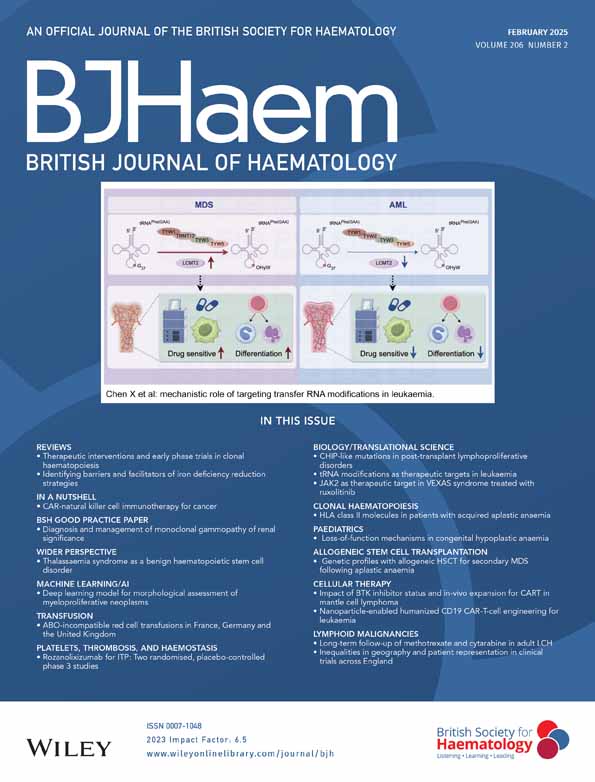Long-term follow-up of methotrexate and cytarabine in adult patients with Langerhans cell histiocytosis
He Lin and Long Chang contributed equally to this work.
Summary
The optimal treatment strategy for adult Langerhans cell histiocytosis (LCH) remains unclear. Our previous study demonstrated the remarkable efficacy of combined methotrexate and cytarabine (Ara-C) [MA] therapy in patients newly diagnosed with LCH, with a median follow-up of 2 years. The present article reports long-term follow-up data spanning a median of 78 months (6.5 years) from a single-arm, single-centre, prospective phase 2 clinical trial (NCT 02389400) conducted between January 2014 and December 2020. Ninety-five adults with newly diagnosed LCH exhibiting multisystem disease or multifocal single-system involvement underwent MA therapy every 35 days for six cycles. Methotrexate (1 g/m2) was administered by 24 h infusion on day 1 and AraC (0.1 g/m2) by 24 h infusion for 5 days. The primary end-point was event-free survival (EFS). The median patient age was 32 years (range 18–65 years). The overall response rate was 89.5%. Seven patients in this cohort died, and 38 experienced disease reactivation. No degenerative central nervous system diseases were observed. The estimated 6-year overall survival (OS) and EFS rates were 93.2% and 55.2% respectively. Multivariate analysis revealed that risk organ (RO) involvement at baseline (hazard ratio [HR] 6.135 [95% confidence interval (CI) 1.185–32.259]; p = 0.031) and age >40 years at diagnosis (HR 7.299 [95% CI 1.056–21.277]; p = 0.042) were associated with inferior OS. RO (HR 2.604 [95% CI 1.418–4.762]; p = 0.002) and skin (HR 2.232 [95% CI 1.171–4.255]; p = 0.015) involvement at baseline were poor prognostic factors for EFS. Regarding adverse events, four patients developed a second primary malignancy. In conclusion, the MA regimen was a valid and safe therapeutic approach for adult patients newly diagnosed with LCH.
CONFLICT OF INTEREST STATEMENT
The author declares no competing interests.
Open Research
DATA AVAILABILITY STATEMENT
The datasets analysed during the current study are available from the corresponding author upon reasonable request.




